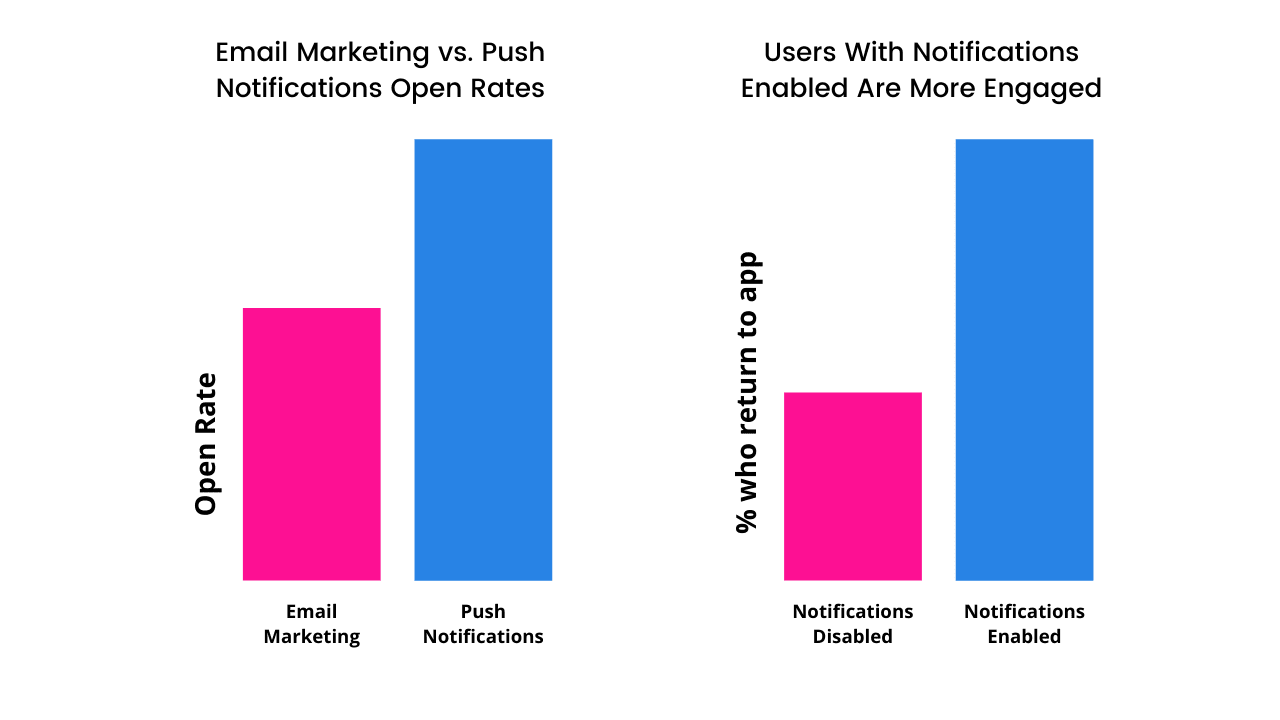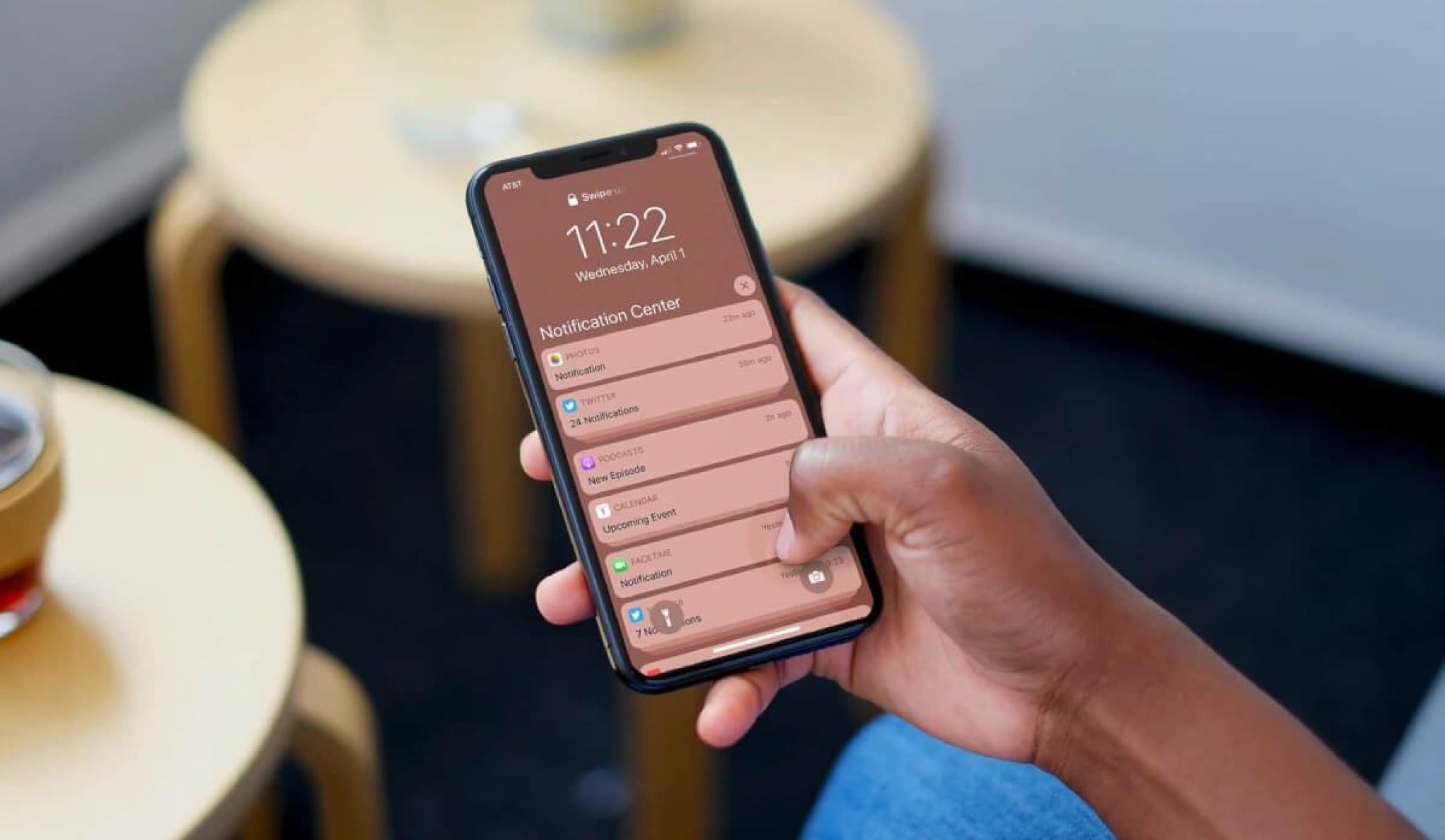You need to hook in your customer the moment they see your content, especially now that there are so many things online that are competing for their attention.
It’s not enough to have a killer product or an irresistible offer; which business hasn’t done that? What you need is a solid marketing strategy that allows you to reach a wider audience and ensures that you keep their attention long enough to reach the call to action of your content piece.
One surefire way of getting (and keeping) your customer’s attention is push notifications.
Push notifications can be annoying if done incorrectly. Still, if the copy is well-crafted and pops up at just the right time, then it can capture your audience’s attention and provide personalised messages that effectively promote your products and services, check out copywriting services to know more about quality content.
What are push notifications?
Push notifications are scheduled clickable messages that nudge the customers toward a specific desired outcome (i.e., downloading an ebook or signing up for the newsletter).
Push notifications can be sent through an app or website to the user’s desktop or mobile device, and they can be used to send real-time alerts. The content can be personalised to drive your customer to action, and it can contain rich media such as images or videos.
There are two platforms for push notifications:
- Web push notifications are ideal for businesses with websites but don’t provide a mobile app yet, as it allows customers to access your alerts through their browser.
- Mobile notifications allow you to reach users when they’re on their smartphones, and it works effectively for businesses that offer an app as part of their products and services.
Once you’ve identified the best platform for your brand, you need to choose what type of content to use for your push notifications.
1. Standard and customised
Standard push notifications usually contain text-only updates, while customised push notifications can be personalised with rich media like images.
Customised or rich push notifications feature up to three clickable links in the message, including two calls to action and the notification itself. This push notification is helpful if you plan to send your customers to multiple landing pages on your website.
2. Order updates
This type of push notification can support e-commerce businesses in promoting the products and services on their platform. It can also notify customers about the status of their items (e.g., the item is out for delivery or is back in stock). Travel companies can also use this notification to update customers about their booking status.
3. Reminders and announcements
Push notifications can be a great way to remind your customers about upcoming sales and promos on your website or app. Got a major event coming? Remind your customers about it via push notifications. Give them a friendly reminder that they have an item in their shopping cart. Push notifications can also serve as automated reminders to customers that have booked an appointment in your business.
A popular example of a brand that uses effective reminder push notifications is Netflix. The streaming platform sends out personalised notifications to remind customers when a new season of their favourite shows has been released.
4. Time and location-based updates
While similar to reminders, time-sensitive push notifications usually cover breaking news or sudden updates in the customer’s area.
For example, a traffic app can use push notifications to inform drivers about potential traffic in their area due to accidents or road closures and suggest alternate routes to get them to their destination. Meanwhile, a travel app can optimise push notifications to provide relevant weather conditions affecting a user’s flight status.
Location-based updates can provide personalised suggestion notifications for each customer based on where they live or work. For example, food apps can give restaurant recommendations based on the customer’s past preferences.
5 reasons you should use push notifications for your business
Technology shaped modern marketing into a more convenient yet competitive environment. You have more competitors, but you also have more tools in your arsenal—with push notifications as one.
Here are five reasons why push notifications can be a valuable tool for your marketing success.
1. They maintain and improve brand reputation
How you present your brand to your customers affects their perception of you. Developing a positive brand reputation makes your business trustworthy to investors and customers.
Sending personalised push notifications can establish your authority and build your reputation, allowing you to develop an online personality for your brand that your customers can engage with.
2. They promote your products and services
Let’s face it: it’s not easy for customers to keep tabs on new products, sales schedules and discounts from every store they support. As a business owner, you can solve this struggle by sending push notifications to promote your products and services.
In a recent survey by the global marketing company Responsys, 50% of customers said that they enabled push notifications to gain access to exclusive offers as well as early releases of products and services.
3. They improve customer engagement
Getting your customer’s attention is only the first step; your content also needs to encourage them to engage with your brand. Personalised push notifications can result in more authentic customer interactions. Even simply inserting their first name into the push notification can add a personal touch and effectively capture their attention.
4. They have a better open rate than emails
While email marketing can be an effective tool, push notifications have a 60% higher open rate, which increases the likelihood of converting your audience into customers.
Push notifications are more accessible and easily visible than emails because you can send notifications through an app or your website. It doesn’t require your audience to check their inboxes, where their subscription emails are more likely to pile up unread.

Photo credit: Candy Bar
5. They help track customer behaviour
Learning about your customer’s purchasing journey is an essential part of developing your sales and marketing strategy. The more you learn about your customers and their behaviour, the better you can market your products and services.
Push notifications can help you track the buyers’ browsing behaviours (e.g, which type of content is effective or which time of the day most people are engaging with your notifications). Once you get these sorted out, you can execute future marketing plans more effectively because you have data to back you up.
How businesses should use push notifications
While push notifications can be an effective marketing tool, they can also drive your audience away if you don’t have a strategy.
We’ve shortlisted a few tips to help you maximise the potential of push notifications while avoiding the common pitfalls.
What to use for effective push notifications
- Optimise the posting schedule – Once you’ve identified the relevant demographic details about your customers, you can schedule your post notifications in the most optimal time slots. This will ensure that they’re more receptive to your message and will be less likely to ignore your notification.
- Write creative copy – While messages for push notifications are succinct, it’s still essential to ensure that the copywriting is engaging and compelling. Good copywriting should engage your audience and encourage them to respond to your message the moment it pops up on their screen.
- Add personal touches – Personalised messages are appealing to customers because it shows that you’re catering to their needs and concerns. Segmenting your push notifications to different types of viewers can allow you to build a diverse audience.
- Test different types of notifications – There is no perfect formula for the best push notification format, so you should test different types to see what works best for your business. It’s crucial to try message frequencies to learn how many push notifications you can send out in a day.
- Use emojis – Push notifications that add visual cues can be more engaging and eye-catching. Context is important when using emojis, so only use those that will fit your message.
What to avoid in creating push notifications
- Send broad and generic messages to all your customers – Sending out generic and unsegmented messages to all of your customers will lead to low engagement. Users will engage with push notifications tailored to their activities and interests.
- Use clickbaity sentences – Do not make claims or give promises that are not backed up by any substantial fact. This will make your brand untrustworthy and could affect customer engagement with your notifications.
- Send out notifications at odd hours – Bad timing can make push notifications more annoying. Schedule your push notifications during afternoons since people are most active during these hours. Avoid sending the same notification at different times of the day.
- Send notifications without a call to action – A push notification without a call to action can seem aimless, and it might leave your audience wondering why that message was there in the first place.
Push notifications bring a lot of value to your business since they improve your brand reputation and promote your products and services effectively because of the high open.
Want to create engaging copy that’s infused with storytelling for your push notifications? Chat with us; we have ideas to share with you.

